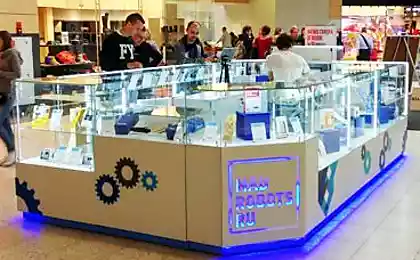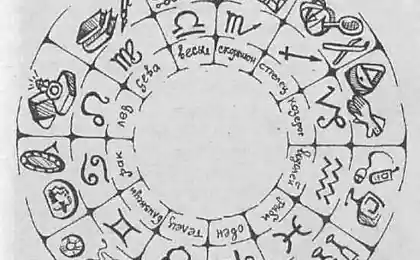730
10 dangerous things in your home
Your own home can greatly shorten the life
After analyzing the data of the latest medical research, "Express newspaper" offers ten most common substances that poison our homes toxins.

1. Means against moths
One of the most dangerous things in the apartment - a chemical agent against moths. The good old folk remedies, such as lavender, geranium leaves, orange peel and strawberry soap theoretically can deter only the adult butterfly. However, in the fight against the larvae, they are useless! But the butterflies are not dangerous for sweaters or thick fur collar. Their larvae gnaw it.
Naphthalene has recently been banned for use in the home. However, in Russia from time to time it appears in the sale and sold out with a bang: it was very effective. Moreover, in small quantities it does not work well: mole killer acts only a high concentration of a substance which is harmful to humans. Poison the moth is quite possible, inhaled its vapors (for example, simply examining the closet). The symptoms - nausea and vomiting to headaches, cramps, diarrhea.
The US Agency for Environmental Protection has issued a special bulletin which emphasized: Naphthalene is carcinogenic! It causes cancer in humans and animals. Prolonged exposure to this substance may cause damage to or destruction of red blood cells (RBCs).
Other repellents containing as an active agent paradichlorobenzene, also pose a serious threat to humans. British scientists found that this substance causes allergic reactions, very strongly irritates the mucous membranes and can trigger an asthma attack.
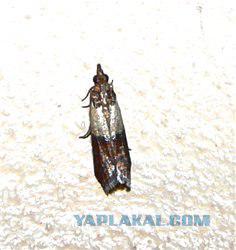
2. DSP
Another very common household pollutants - formaldehyde. The highest concentration of the vapor of this stuff are determined in the apartments, which recently brought the furniture from particle board (wood chipboard). Another source of pollution of formaldehyde - gas stoves. When incomplete combustion of methane air "enriched" toxic compound that adversely affects the DNA and reproductive organs, eyes and skin.
The substance is considered carcinogenic: prolonged exposure to formaldehyde is fraught with the development of cancer of the nose and throat.
By the way, if you're in an apartment is old furniture made of particleboard, do not rush to throw it: over time, the release of formaldehyde from it practically comes to naught. That is, the more damage it will not bring you.

3. Carpets of synthetic
Many synthetic carpets and rugs have toxic impregnation and strongly electrified. Look in the shop, which sells such goods: you'll be smitten on the spot pungent smell! The first impression - that you are in the department of paints and varnishes. The air was literally hanging poisonous fumes of toxic substances that are released from the adhesive bases.
If you bought a new carpet that smells strongly, do not rush to lay him in his bedroom. It is fraught with insomnia, irritability and allergic reactions. Put its acquisition in two or three weeks in the unfolded state, where rarely: in unused room or cottage.
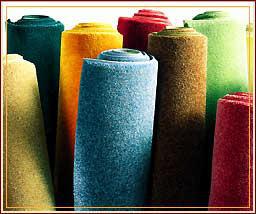
4. Laser printers
Australian scientists have found that a laser printer can do for your health is no less harmful than passive smoking! The fact that a working printer emits tiny particles in the air of the printing powder, which can get into the lungs. Consequences - shortness of breath and chronic diseases.
Try to place it in a well-ventilated areas and do not keep it on without the need.

5. Plastic bottles
In the production of plastic bottles (including children) used bisphenol A.
Scientists have long regarded with suspicion - since, as it turned out: bisphenol A structurally similar to the female sex hormone estrogen! Experts of the National Toxicology Program of the USA a few years ago reported that in experimental animals it accelerates puberty, breaking behavior, and contributes to the development of prostate cancer and breast cancer.
Never heat plastic bottles! They can not be washed with hot water. And it is very desirable to heat food in plastic containers in the microwave: When heating the allocation of bisphenol A increases 55 times.
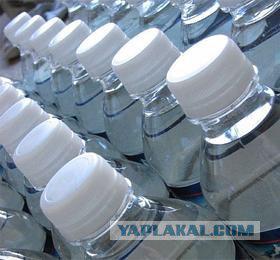
6. retardants
Used in mattresses, upholstered furniture, television and computer parts, these substances have saved many lives by preventing fires in the home. Flame retardants, polybrominated diphenyl ethers (PBDEs), first adopted by the cheers. However, it quickly became clear that they cause enormous harm to health.
Initially, they were impregnated polyurethane foam mattresses, which are easy to ignite, for example, because of the unquenched cigarette. However, in a few years all over the world have been recorded hundreds of thousands of cases: those who sleep on such mattresses, is the destruction of the internal organs, problems with the central nervous system.
In humans, these toxic substances into household dust. They cause thyroid disease, impair the quality of the sperm, and in nursing mothers accumulate in breast milk. Many researchers insist that the use of PBDEs in residential areas should be prohibited.
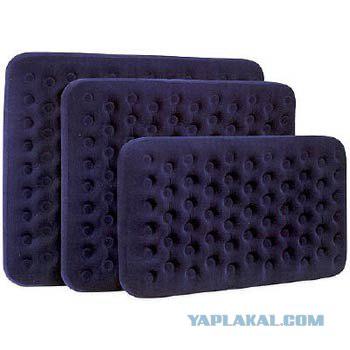
7. Phthalates
Phthalates are widely used as a plasticizer in the manufacture of toys, teething rings, feeding bottles babies - wherever needed soft plastic. They are contained in cosmetics for men and women - from cheap to very expensive, and in all kinds of sex toys. In esters of phthalic acid, and salts and above it had a bad reputation because they mimic the structure of estrogen.
US and Canadian scientists say that phthalates are harmful influence on the early development of the boys and adults weaken the effect of testosterone, the main male hormone, and cause infertility. In Canada, even started a broad campaign for that oblige manufacturers to indicate on the packaging information on the content of phthalates in products.
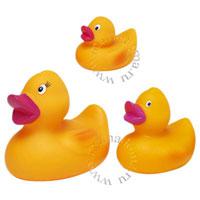
8. Pesticides
Pesticides - chemicals used for pest control. These toxic substances uses almost every Russian family - who of us ever poison cockroaches, mosquitoes or mice!
Scientists at Harvard Medical School found that people are exposed to pesticides, even in small doses, 70 per cent more likely to suffer from Parkinson's disease than those who almost never come into contact with these substances.
If you ever feel an urge to arrange baiting household pests, be sure to wear a dust mask, and then properly ventilate the room.
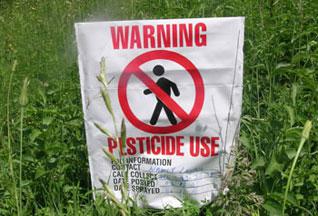
9. Lead paint
In many homes the walls and doors are painted with lead paint. If the paint does not crack or peel off, it is not dangerous. But the burst paint poses a serious environmental threat to living at home: people are forced to breathe dust that contains lead compounds. Especially this situation is undesirable for children. Even low concentrations of the poison can cause problems with the central nervous system, blood cells, brain and kidney.
If you are going to freshen the paint, in any case, do not do it yourself. Hire professionals. They work in protective clothing, they have the necessary skills. They will be able to remove the paint from all surfaces, contaminating the minimum space around them.
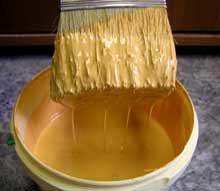
10. Air fresheners and cleaning products
Researchers at the University of California at Berkeley concluded that the small unventilated space (what are the bathrooms and toilets) are completely unsuitable for the soul to polish them with modern facilities. As a result, a cleaning level of toxins in our bathrooms just rolls over. The reason for that - a mixture of the two major chemicals based on ethylene glycol and terpenes.
Ethylene glycol is dangerous if inhaled, and contact with skin. It causes weakness, headache, dizziness, shortness of breath, palpitations. Terpenes themselves are also not toxic, but it reacts with ozone and other substances that produce poisonous combination.
Do not make cleaning the bathroom in a chemical attack against your own body. Reduce the number of cleaners. No more of it is possible to do.
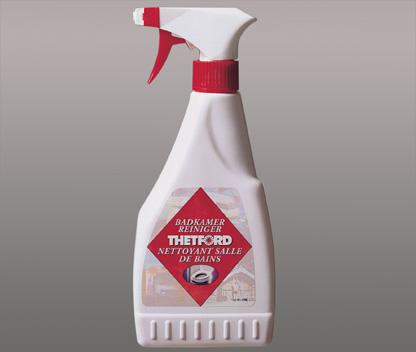
Source:
After analyzing the data of the latest medical research, "Express newspaper" offers ten most common substances that poison our homes toxins.

1. Means against moths
One of the most dangerous things in the apartment - a chemical agent against moths. The good old folk remedies, such as lavender, geranium leaves, orange peel and strawberry soap theoretically can deter only the adult butterfly. However, in the fight against the larvae, they are useless! But the butterflies are not dangerous for sweaters or thick fur collar. Their larvae gnaw it.
Naphthalene has recently been banned for use in the home. However, in Russia from time to time it appears in the sale and sold out with a bang: it was very effective. Moreover, in small quantities it does not work well: mole killer acts only a high concentration of a substance which is harmful to humans. Poison the moth is quite possible, inhaled its vapors (for example, simply examining the closet). The symptoms - nausea and vomiting to headaches, cramps, diarrhea.
The US Agency for Environmental Protection has issued a special bulletin which emphasized: Naphthalene is carcinogenic! It causes cancer in humans and animals. Prolonged exposure to this substance may cause damage to or destruction of red blood cells (RBCs).
Other repellents containing as an active agent paradichlorobenzene, also pose a serious threat to humans. British scientists found that this substance causes allergic reactions, very strongly irritates the mucous membranes and can trigger an asthma attack.

2. DSP
Another very common household pollutants - formaldehyde. The highest concentration of the vapor of this stuff are determined in the apartments, which recently brought the furniture from particle board (wood chipboard). Another source of pollution of formaldehyde - gas stoves. When incomplete combustion of methane air "enriched" toxic compound that adversely affects the DNA and reproductive organs, eyes and skin.
The substance is considered carcinogenic: prolonged exposure to formaldehyde is fraught with the development of cancer of the nose and throat.
By the way, if you're in an apartment is old furniture made of particleboard, do not rush to throw it: over time, the release of formaldehyde from it practically comes to naught. That is, the more damage it will not bring you.

3. Carpets of synthetic
Many synthetic carpets and rugs have toxic impregnation and strongly electrified. Look in the shop, which sells such goods: you'll be smitten on the spot pungent smell! The first impression - that you are in the department of paints and varnishes. The air was literally hanging poisonous fumes of toxic substances that are released from the adhesive bases.
If you bought a new carpet that smells strongly, do not rush to lay him in his bedroom. It is fraught with insomnia, irritability and allergic reactions. Put its acquisition in two or three weeks in the unfolded state, where rarely: in unused room or cottage.

4. Laser printers
Australian scientists have found that a laser printer can do for your health is no less harmful than passive smoking! The fact that a working printer emits tiny particles in the air of the printing powder, which can get into the lungs. Consequences - shortness of breath and chronic diseases.
Try to place it in a well-ventilated areas and do not keep it on without the need.

5. Plastic bottles
In the production of plastic bottles (including children) used bisphenol A.
Scientists have long regarded with suspicion - since, as it turned out: bisphenol A structurally similar to the female sex hormone estrogen! Experts of the National Toxicology Program of the USA a few years ago reported that in experimental animals it accelerates puberty, breaking behavior, and contributes to the development of prostate cancer and breast cancer.
Never heat plastic bottles! They can not be washed with hot water. And it is very desirable to heat food in plastic containers in the microwave: When heating the allocation of bisphenol A increases 55 times.

6. retardants
Used in mattresses, upholstered furniture, television and computer parts, these substances have saved many lives by preventing fires in the home. Flame retardants, polybrominated diphenyl ethers (PBDEs), first adopted by the cheers. However, it quickly became clear that they cause enormous harm to health.
Initially, they were impregnated polyurethane foam mattresses, which are easy to ignite, for example, because of the unquenched cigarette. However, in a few years all over the world have been recorded hundreds of thousands of cases: those who sleep on such mattresses, is the destruction of the internal organs, problems with the central nervous system.
In humans, these toxic substances into household dust. They cause thyroid disease, impair the quality of the sperm, and in nursing mothers accumulate in breast milk. Many researchers insist that the use of PBDEs in residential areas should be prohibited.

7. Phthalates
Phthalates are widely used as a plasticizer in the manufacture of toys, teething rings, feeding bottles babies - wherever needed soft plastic. They are contained in cosmetics for men and women - from cheap to very expensive, and in all kinds of sex toys. In esters of phthalic acid, and salts and above it had a bad reputation because they mimic the structure of estrogen.
US and Canadian scientists say that phthalates are harmful influence on the early development of the boys and adults weaken the effect of testosterone, the main male hormone, and cause infertility. In Canada, even started a broad campaign for that oblige manufacturers to indicate on the packaging information on the content of phthalates in products.

8. Pesticides
Pesticides - chemicals used for pest control. These toxic substances uses almost every Russian family - who of us ever poison cockroaches, mosquitoes or mice!
Scientists at Harvard Medical School found that people are exposed to pesticides, even in small doses, 70 per cent more likely to suffer from Parkinson's disease than those who almost never come into contact with these substances.
If you ever feel an urge to arrange baiting household pests, be sure to wear a dust mask, and then properly ventilate the room.

9. Lead paint
In many homes the walls and doors are painted with lead paint. If the paint does not crack or peel off, it is not dangerous. But the burst paint poses a serious environmental threat to living at home: people are forced to breathe dust that contains lead compounds. Especially this situation is undesirable for children. Even low concentrations of the poison can cause problems with the central nervous system, blood cells, brain and kidney.
If you are going to freshen the paint, in any case, do not do it yourself. Hire professionals. They work in protective clothing, they have the necessary skills. They will be able to remove the paint from all surfaces, contaminating the minimum space around them.

10. Air fresheners and cleaning products
Researchers at the University of California at Berkeley concluded that the small unventilated space (what are the bathrooms and toilets) are completely unsuitable for the soul to polish them with modern facilities. As a result, a cleaning level of toxins in our bathrooms just rolls over. The reason for that - a mixture of the two major chemicals based on ethylene glycol and terpenes.
Ethylene glycol is dangerous if inhaled, and contact with skin. It causes weakness, headache, dizziness, shortness of breath, palpitations. Terpenes themselves are also not toxic, but it reacts with ozone and other substances that produce poisonous combination.
Do not make cleaning the bathroom in a chemical attack against your own body. Reduce the number of cleaners. No more of it is possible to do.

Source:

















